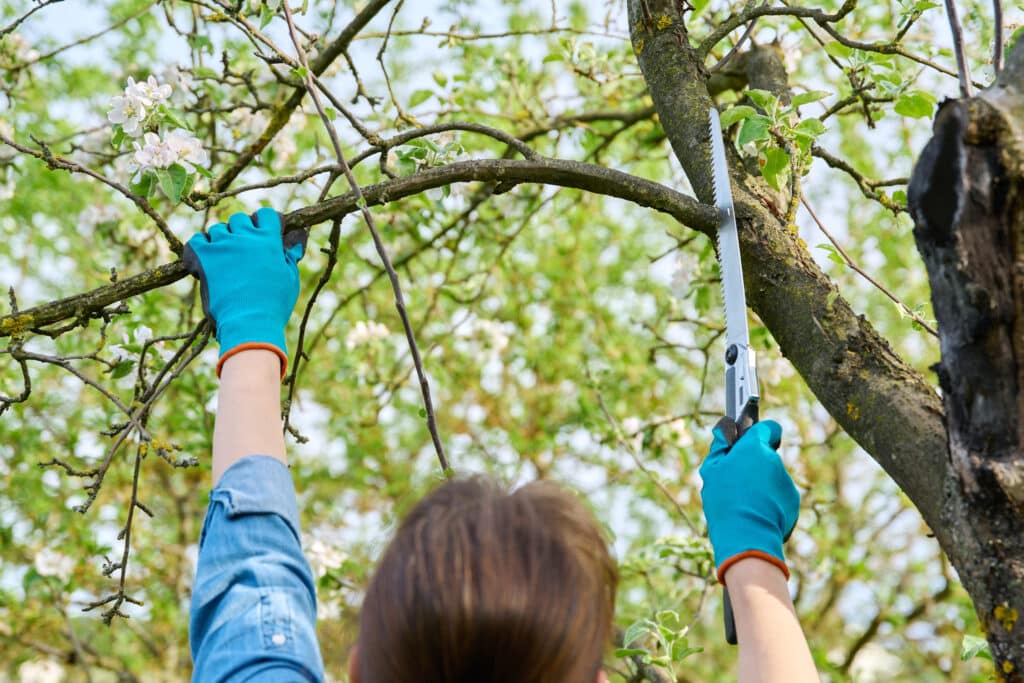Maintaining the health and appearance of your trees is essential, whether in your backyard or around your property.
Tree trimming not only enhances curb appeal but also promotes healthy growth and prevents potential safety hazards. But how do you know when it’s the best time to trim your trees in Ottawa’s unique climate?
This guide will walk you through the ideal seasons for tree trimming in Ottawa, the benefits of proper timing, and tips to get the most out of your efforts.
Why Timing Matters in Tree Trimming
When it comes to “tree trimming Ottawa,” timing plays a critical role in how well your trees recover and thrive. Trimming your trees at the wrong time of year can stress them out, potentially making them more susceptible to disease or poor growth. Plus, growth cycles and Ottawa’s seasonal changes directly influence a tree’s healing process.
By understanding when and why trees are best trimmed, you’re ensuring not only their visual appeal but also their longevity and structural safety.
The Best Seasons for Tree Trimming in Ottawa
1. Late Winter to Early Spring (February to April)
Late winter and early spring are widely regarded as the optimal time for tree trimming in Ottawa. Why? Most trees are still dormant during this window, and trimming them in this state causes minimal stress. Dormant pruning encourages robust growth when the trees wake up with the arrival of spring.
Benefits of Winter/Spring Trimming:
- Minimal impact on tree health due to dormancy
- Easier to see branches clearly without leaf obstruction
- Lower chances of diseases spreading because pests like insects and fungi are inactive during the cold months
2. Mid-Summer (June to Early August)

For species like maple and birch trees that “bleed” a lot of sap if pruned in late winter, trimming in mid-summer is a good alternative. By this time in the growing season, leaves are fully developed, and trees have entered a stable phase of their growth cycle, which can handle pruning better.
Benefits of Summer Trimming:
- Helps shape trees, especially younger ones, for aesthetic and structural purposes
- Useful for removing weak, diseased, or dead limbs that become visible during full bloom
- Maintains the structural integrity of your trees
3. Fall (September to November)
Although late fall isn’t ideal for every type of tree, it’s still a popular time for tree trimming in Ottawa. Once most of a tree’s leaves have fallen and it’s entering dormancy, pruning to remove dead or hazardous branches can help prepare trees for the rigours of Ottawa’s winter.
Benefits of Fall Trimming:
- Prevents potential winter hazards like falling branches under snow and ice
- Readies your trees for next spring’s regrowth phase
Times to Avoid Tree Trimming in Ottawa
While tree trimming can happen year-round in an emergency (e.g., storm-damaged branches), there are less favourable times to prune your trees.
Avoid trimming during early spring as trees are busy sending energy into new growth and more prone to stress. Similarly, avoid late summer trimming for most species, as it can interrupt their preparation for winter dormancy.
Tips for Effective Tree Trimming in Ottawa
- Know the tree species: Different trees have different needs. Oaks, for example, should be trimmed during dormancy to prevent exposure to oak wilt disease.
- Watch for weather conditions: Ottawa winters can be harsh, and trimming storm-damaged branches as needed is key for safety.
- Use the right tools: Dull or improper equipment can harm trees. Consider hiring professionals who specialize in tree trimming in Ottawa to ensure proper methods.
- Stay proactive: Regularly inspect trees for dead branches, overgrowth, or pest damage. Consistent maintenance eliminates the need for intensive pruning later.
Professional Help with Tree Trimming in Ottawa
Tree trimming can sometimes be more complicated than expected, especially with Ottawa’s mix of seasons and native tree species. Enlisting a professional arborist ensures your trees are trimmed safely with methods that encourage health and growth.
Professionals also take into account Ottawa’s seasonal nuances, such as frost timing and pest trends, for more effective pruning.
Plan Now, Enjoy Year-Round Beauty
Whether you’re trimming for aesthetic appeal or to promote healthier growth, timing your tree care efforts with Ottawa’s seasonal cycles is key. Late winter through early spring remains the most popular window, but summer and fall offer options depending on individual tree needs.
Equally important is investing in proper tools and expertise to ensure tree trimming contributes positively, not harmfully, to your landscapes.
If you’re still unsure when and how to trim your trees, reconnect with nature’s rhythm by consulting professionals who specialize in tree trimming in Ottawa.
Need expert advice?Contact our team of tree care experts at ZZ Chop todayfor a consultation. We’re here to help you make the best choice for your trees—and your peace of mind!
Worst time to prune trees
ChatGPT said:
The worst time to prune trees is during the late summer and early fall. During this period, trees are still actively growing, and pruning can actually stimulate new growth just before the colder months arrive. That new growth won’t have enough time to harden before winter, leaving it vulnerable to frost damage, disease, and dieback.
Pruning in fall can also make trees more susceptible to fungal infections since spores are more active in cool, moist conditions. Additionally, open wounds from cuts don’t heal as efficiently when the tree’s energy is focused on preparing for dormancy.
For most trees, the best pruning time is late winter to early spring (February to early April), when trees are still dormant but just about to start growing. This timing encourages strong, healthy regrowth and reduces stress on the tree.
Tree pruning vs trimming
Here’s a clear comparison table showing the difference between tree pruning and tree trimming:
| Aspect | Tree Pruning | Tree Trimming |
|---|---|---|
| Main Purpose | Improves tree health, safety, and structure | Maintains shape, size, and appearance |
| Focus | Removes dead, diseased, or weak branches | Cuts back overgrown branches for neatness |
| Timing | Usually done in late winter or early spring when trees are dormant | Done multiple times a year, especially in growing season |
| Goal | Promote strong growth and prevent disease | Keep landscape tidy and branches away from structures |
| Tools Used | Pruning shears, loppers, saws | Hedge trimmers, shears, pruning saws |
| Best For | Mature trees and fruit trees needing health maintenance | Ornamental trees, hedges, and shrubs |
| Results | Healthier, safer, longer-living tree | Well-shaped, visually appealing landscape |
Best time of year to trim oak trees
ChatGPT said:
The best time of year to trim oak trees is during the late winter to early spring, typically between December and March, when the trees are dormant. Trimming oaks in this period helps the tree heal quickly and reduces the risk of disease or pest infestations.
One of the main reasons timing is so important for oaks is to prevent oak wilt, a deadly fungal disease spread by sap-feeding beetles that are active in warm weather. Pruning during the dormant season — when beetles and fungal spores are inactive — minimizes the risk of infection.
Avoid trimming oak trees in spring and summer (April through July), as fresh pruning wounds can attract insects that carry oak wilt.
How to trim a tree that is too tall
Trimming a tree that’s grown too tall requires careful planning to avoid damaging the tree or creating safety hazards. The key is to reduce its height gradually and correctly, not by cutting the top off — a common mistake called “tree topping” that can permanently harm the tree. Here’s how to do it safely and effectively:
1. Assess the Tree First
Before cutting, check the tree’s overall health, structure, and growth pattern. If it’s near power lines or close to your home, it’s safest to hire a professional arborist.
2. Avoid Topping
Never just cut off the top of a tall tree. Topping leaves large, open wounds that invite disease, decay, and weak new growth, often making the tree more dangerous in the long run.
3. Use Crown Reduction Instead
The correct method is called crown reduction. This involves trimming back the highest branches to a lateral branch that is at least one-third the size of the branch being removed. This keeps the tree’s natural shape and distributes growth evenly.
4. Remove Dead or Crossing Branches
While reducing height, also cut away dead, diseased, or rubbing branches to improve airflow and light penetration.
5. Trim in the Right Season
Do the trimming in late winter or early spring, when the tree is dormant. This helps the tree heal faster and reduces the risk of pest or disease problems.
6. Make Clean Cuts
Always cut just outside the branch collar (the swollen area where the branch meets the trunk) to promote proper healing. Avoid cutting too close or leaving stubs.
7. Step Back and Balance the Canopy
As you trim, step back frequently to ensure the tree maintains a natural, balanced shape. Removing too much at once can shock the tree; aim to remove no more than 20–25% of the canopy per year.
If the tree is extremely tall or unstable, it’s best to have a licensed tree service handle the job with proper equipment and safety gear.
FAQs
1.What is the best time of year to trim trees in Ottawa?
The best time to trim trees in Ottawa is from late winter to early spring (February to April). During this dormant season, trees experience minimal stress, and pruning encourages healthy growth once spring arrives.
2. Can I trim my trees in the summer?
Yes, you can trim trees in mid-summer (June to early August), especially if you need to shape them or remove damaged or diseased branches. Summer pruning is ideal for species like maples and birches that “bleed” sap when cut in winter.
3. Is it okay to trim trees in the fall?
Tree trimming in late fall can be beneficial for removing dead or hazardous branches before Ottawa’s winter storms. However, avoid heavy pruning as trees are preparing for dormancy and healing slows down during this time.
4. When should I avoid trimming my trees in Ottawa?
Avoid trimming in early spring when trees are pushing out new growth, and in late summer, when pruning can interfere with dormancy preparation. These periods can stress the tree and make it more vulnerable to pests and disease.
5. How often should trees be trimmed in Ottawa?
Most mature trees benefit from trimming every 3–5 years, while younger or ornamental trees may need more frequent shaping. Regular inspections by a certified arborist can help determine the best schedule for your tree species.
6. Why should I hire a professional for tree trimming?
Professional arborists understand local species, weather conditions, and proper pruning techniques. Hiring a certified tree service in Ottawa ensures your trees are trimmed safely, promoting health, longevity, and curb appeal without unnecessary damage.
7. Does tree trimming help protect my property during storms?
Absolutely. Properly trimmed trees are less likely to lose heavy branches during Ottawa’s winter storms or strong winds. Removing weak, overgrown, or dead limbs reduces the risk of property damage and improves overall tree stability.




